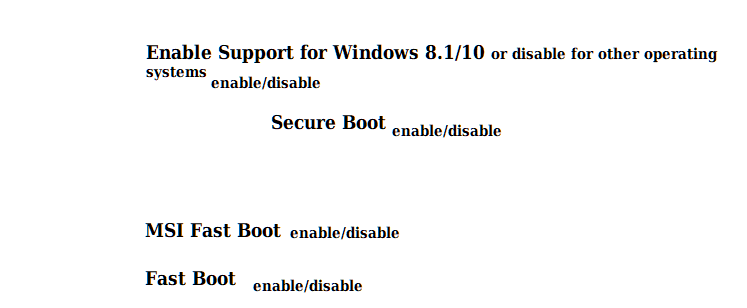I was trying to determine what manner of incompatibility may pose this arrangement of the UEFI/BIOS in a baseboard?

As one can see here, Secure Boot depends fully from the top prerequisite and when the top option is disabled, Secure Boot too is not available. In the event of upgrading such a device to Windows 11, what would be better to set the Support option for Windows, enabled or disabled?
Given that a device must support the option of Secure Boot without necessarily having it enabled while upgrading to Windows 11.
